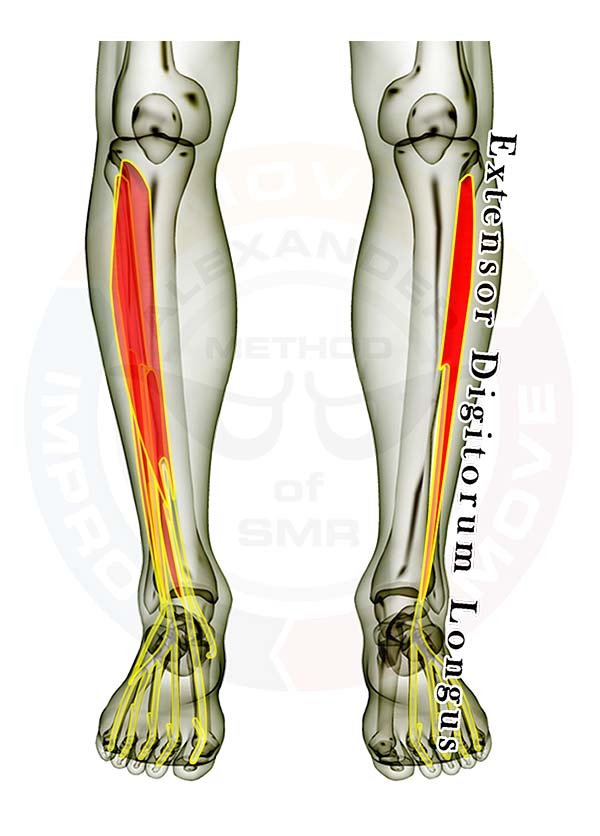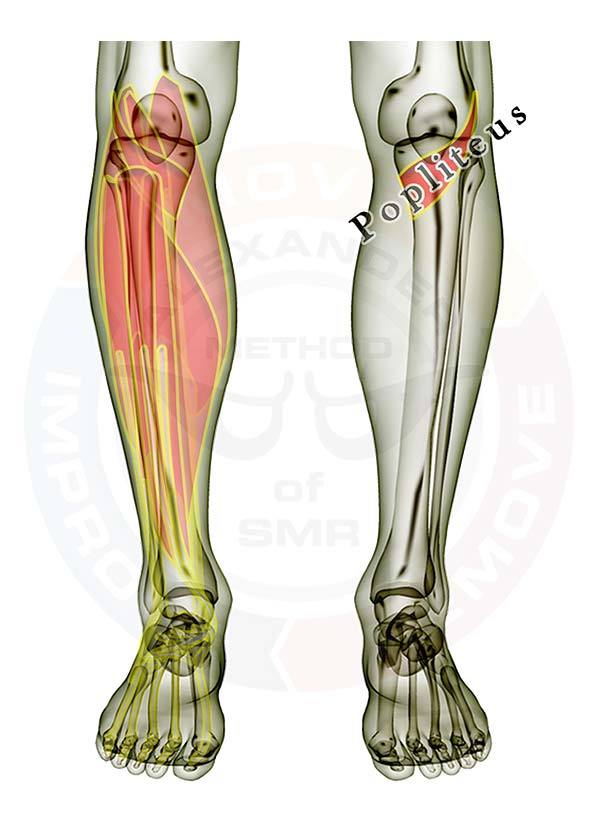
Pictured above is the posterior tibialis muscle. It stabilizes your foot & ankle for balance by pulling the bones of your arch toward the back of your lower leg (plantar flexing the ankle) and rotating the bottom of your foot inward (inverting your foot). It attaches underneath all of the muscles attached to the back of your lower leg between the two bones, and its tendon runs down the back inside of your ankle and attaches to most of the bones in the arch of the foot.
If this muscle locks up it will feel tight and possibly painful in the bottom of your foot. This muscle is a BIG contributor plantar fasciitis. Rarely will this muscle lock up without the toe flexor muscles needing attention too. The soleus muscle ALWAYS needs attention if your posterior tibialis muscle locks up, and your peroneal muscles will also likely need some TLC on the outside of your lower leg.
The posterior tibialis muscle is displayed on the right leg. On the left leg the muscles located in the back of your lower leg are layered, showing how some of the muscles are covered by the others. All of the muscles are see-through so that you can appreciate the location and size of each muscle relative to the others.
Click here for a list of all the muscles.
Muscles that cross or attach to the hip or thigh bone (femur) and attach below the knee joint and DO NOT attach to the knee cap (patella)
Lower Leg
The following muscles attach across or below the knee.
Click the appropriate link for your interest.
Muscles that cross the knee
Muscles that pass or attach between the knee & ankle
- Gastrocnemius
- Popliteus
- Plantaris
- Soleus
- Peroneus Longus
- Peroneus Brevis
- Flexor Digitorum Longus
- Flexor Hallucis Longus
- Posterior Tibialis
- Anterior Tibialis
- Extensor Digitorum Longus
- Extensor Hallucis Longus
Good luck working out those tight knots.
If you have any questions, please post a comment. We try to respond within 24 hours.
We're here to help you get more out of your training!







